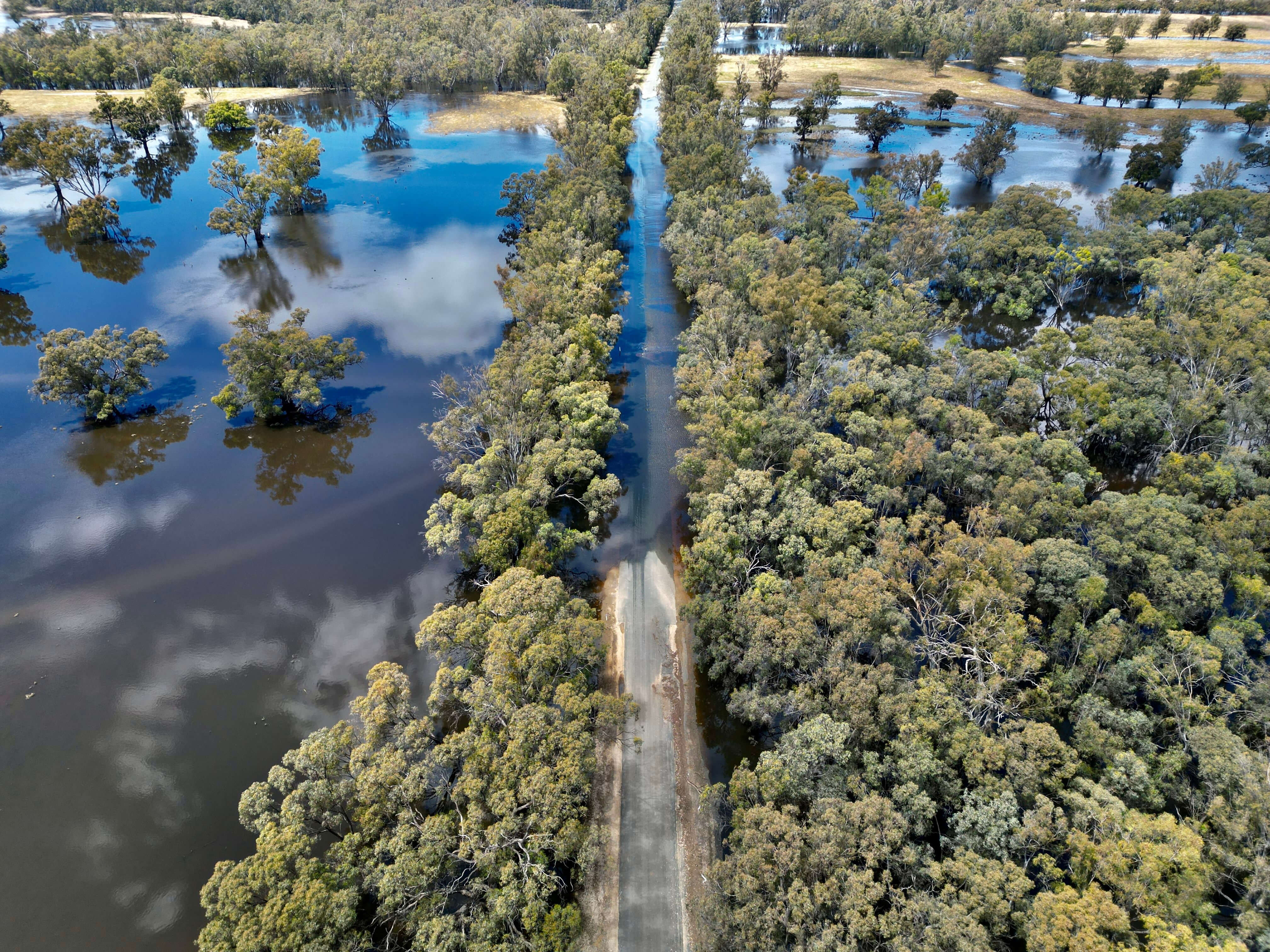Physical risks from a changing climate are the basis for both transition and liability risks. A panel of experts at the AdaptNSW Forum 2022 unpacked these risks and the opportunities for businesses to build resilience on the road ahead.
Climate change is going to change everything. There are all sorts of risks we need to worry about.
Zoe Whitton, Managing Director and Head of Impact, Pollination Group
But there are a range of risks associated with climate change that organisations and governments around Australia, and indeed the world, are only beginning to understand.
These risks were explored in a session at the AdaptNSW Forum 2022. This brought together some of Australia’s most prominent business, government and scientific leaders to explore the obstacles and opportunities ahead as our nation adapts to climate change.
The risks associated with climate change can be broadly categorised into three areas: physical, transition and liability.
Isabel Copeman oversees the governance of climate change adaptation activities for Australia’s largest water utility, Sydney Water.
Sydney Water supplies around 1.5 billion litres of safe drinking water to customers each day and Isabel, as Resilience and Change Adaption Lead, is helping Sydney Water to adapt to an uncertain climate future.
“Systems are changing faster than we can keep up,” Isabel told the AdaptNSW Forum 2022 audience.
Physical risks: Responding to risks we can’t yet see
Climate change brings with it huge unknowns. We don't know how population and economic growth, technological developments, political and social changes will influence greenhouse gas emissions. The climate modelling community has developed Representative Concentration Pathways, or RCPs, which are plausible global warming scenarios that help organisations to explore credible future options.
Sydney Water’s team no longer looks at historical heat or rainfall conditions – or whether something hits a “one in 100-year flood level” – to predict future conditions, Isabel said. Instead, Sydney Water is planning based on the RCP4.5 pathway, where emissions peak in about 2040. Sydney Water’s planned infrastructure projects and service delivery are being adjusted to adapt to that “RCP4.5 future”.
What does this look like? Sewerage pumping stations that were at periodic risk of flooding are being raised to reduce the future risks, for instance. Water demand estimates now consider the number of extreme heat days and their frequency. Planning for an uncertain future means thinking about “adaptive capacity” to ensure systems are responsive and resilient to physical risks we can’t yet see, Isabel noted.
Transition risks: Transparency and trust
The second group of climate-related risks, transition risks, have been the easiest ones for financial markets to understand, said Pollination Group’s Managing Director and Head of Impact, Zoe Whitton.
Zoe leads the specialist climate change investment and advisory firm and serves on the board of the Investor Group on Climate Change.
Transition risks emerge from changes to policy, technology and market dynamics as the world moves towards net zero emissions. Industries reliant on fossil fuels, for instance, face the prospect of stranded assets and declining profitability; established business models may be disrupted as regulation evolves or as consumers make the shift to sustainable products and services.
Investors need to understand climate-related transition risks to make informed decisions about capital allocation. The Task Force on Climate-related Financial Disclosures was established in 2015 to develop a set of recommendations on the types of information that companies should disclose. Since then, the number of companies that align their reports to TCFD has exceeded 3,800 and disclosure is now mandatory in many markets, Zoe observed.
TCFD’s disclosures has change the way companies think about transparency and trust. It has challenged companies to consider their transition pathway to net zero, how that will align with the Paris Agreement and how it will be independently verified. TCFD has also elevated the significance of scenario analysis, Zoe noted. “Which scenarios you analyse and what they say... is quite a big question” because it informs a company's understanding of climate risk and how it should respond.
Liability risks: Closing the ‘say do’ gap
Then there are the liability risks – the legal and regulatory consequences that come with failing to act, not doing so adequately, or of overstating that action.
Shareholders and investors are pressuring companies and financial institutions to disclose and manage climate-related risks, noted Cecile Walton, Director of Risk and Regulatory Consulting at MinterEllison.
The flow of capital has moved. Regulators, shareholders and customers are now really stampeding and saying ‘show me the plan’... As a result, inaction is just not an option.
Cecile Walton, Director of Risk and Regulatory Consulting, MinterEllison
Cecile pointed to several examples, starting with shareholder litigation against banks that continue to finance oil and gas projects in contravention with their own net zero targets. Several regulators also have ‘greenwashing’ in their line of sight for what Cecile called the “say do gap”. The Australian Competition and Consumer Commission’s compliance and enforcement priorities include misleading environmental and sustainability marketing claims, while the Australian Securities & Investments Commission took regulatory action against 35 companies in the nine months to March 2023.
Perhaps the biggest risk for companies is inaction – and that depends on capturing the hearts and minds of those that have not been swayed by science. But for Zoe Whitton, who has spent more than a decade communicating the climate science and its implications for investment, understanding the evidence and the risks is not enough. “A lot of the technical questions – at least the high-level ones – have been answered.” Now, is the time to act.
The AdaptNSW Forum 2022, held in partnership between the National Environmental Science Program and the NSW Government’s Office of Energy and Climate Change (OECC), attracted around 330 attendees and 85 presenters. Join the conversation in 2023 for two days of discovery, collaboration and innovation from 4-5 December. Register today for the AdaptNSW Forum 2023.
For more content, check out the AdaptNSW Forum 2022 session summaries.
Articles
Learn how Moodji Farm brings intergenerational collaboration to address climate change, support Indigenous heritage and build social resilience in Bermagui.
This collaboration between NSW DPI and the Redmap project demonstrates how marine species are responding to climate change and shows how citizen science can engage communities in conversations about climate adaptation.



